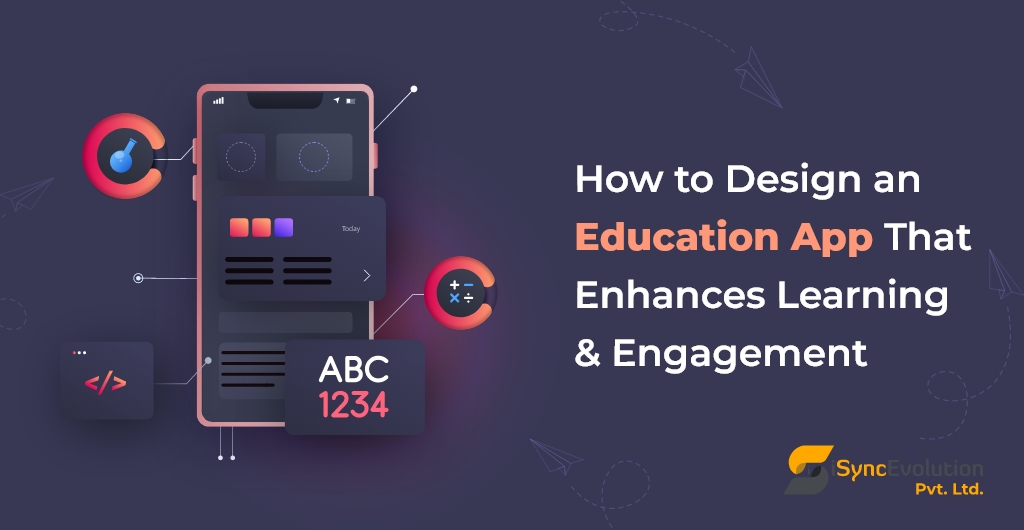As education becomes increasingly digital, it’s no surprise that the market for education apps is growing rapidly. With a wide variety of education apps available today, designing an app that stands out and truly enhances learning and engagement can be a challenge. In this article, we’ll take a closer look at how to design an education app that meets these goals.
- Define your target audience
The first step in designing an education app is to define your target audience. This will help you determine the features and functionality that will be most important for your app. For example, an education app for college students will have different needs than an app designed for children in elementary school.
- Choose the right technology
When it comes to app development, choosing the right technology is crucial. For education apps, it’s important to consider both the platform (iOS, Android, etc.) and the programming language. The most popular programming languages for mobile app development are Java and Swift.
- Focus on user experience
The user experience (UX) is critical for any app, but it’s especially important for education apps. The app should be intuitive and easy to use, with clear navigation and well-designed interfaces. It’s also important to consider accessibility features for users with disabilities.
- Use gamification techniques
Gamification is the use of game elements in non-game contexts to engage and motivate users. In education apps, gamification can be a powerful tool to enhance learning and engagement. For example, you could use badges, points, or levels to motivate users to complete tasks or achieve learning objectives.
- Incorporate multimedia content
Multimedia content, such as videos, images, and interactive animations, can be a powerful tool for enhancing learning and engagement. When designing an education app, consider how you can incorporate multimedia content to help users better understand concepts and stay engaged.
- Provide personalized learning experiences
Personalization is key for education apps. By providing personalized learning experiences, you can help users stay engaged and motivated. For example, you could use machine learning algorithms to personalize content based on a user’s interests, learning style, or progress.
- Use social features
Social features, such as discussion forums and collaborative learning tools, can be a powerful tool for enhancing engagement and motivation. By allowing users to connect with other learners and instructors, you can create a sense of community and support.
- Test and iterate
Finally, it’s important to test and iterate your education app to ensure that it’s meeting the needs of your target audience. Collect feedback from users and make changes based on their input. By continuously improving your app, you can ensure that it’s providing a truly valuable and engaging learning experience.
- Incorporate interactive features
Interactive features, such as quizzes, puzzles, and simulations, can be a powerful tool for enhancing engagement and learning. By providing interactive features, you can help users apply what they’ve learned in a fun and engaging way.
- Provide feedback and progress tracking
Providing feedback and progress tracking is important for motivating learners and helping them stay on track. By providing regular feedback on their progress and achievements, you can help learners feel a sense of accomplishment and motivation to continue learning.
- Consider accessibility
When designing an education app, it’s important to consider accessibility features for users with disabilities. This includes features such as text-to-speech and closed captioning for users with hearing or visual impairments.
- Ensure security and privacy
Security and privacy are critical considerations for any app, but they are especially important for education apps that may store sensitive information. Make sure your app is secure and follows best practices for data privacy.
- Offer offline access
While online access is important for many education apps, it’s also important to consider offline access for users who may not have access to the internet all the time. By offering offline access to certain features, you can ensure that learners can continue to learn even when they don’t have internet access.
- Keep it simple
While it’s important to provide a range of features and functionality in your education app, it’s also important to keep it simple and user-friendly. Avoid overwhelming users with too much information or too many features. Focus on the most important features and design them in a way that is intuitive and easy to use.
- Keep up with updates and new technologies
Finally, it’s important to keep up with updates and new technologies in the education app space. This will help you stay ahead of the competition and provide a cutting-edge learning experience for your users.
In summary, designing an education app that enhances learning and engagement requires careful consideration of the target audience, technology, user experience, gamification techniques, multimedia content, personalization, social features, testing and iteration, interactive features, feedback and progress tracking, accessibility, security and privacy, offline access, simplicity, and keeping up with updates and new technologies. If you need assistance with designing and developing an education app, iSyncEvolution can help. Our team of experienced app developers can help you create a customized education app that meets your specific needs and helps learners achieve their goals.
